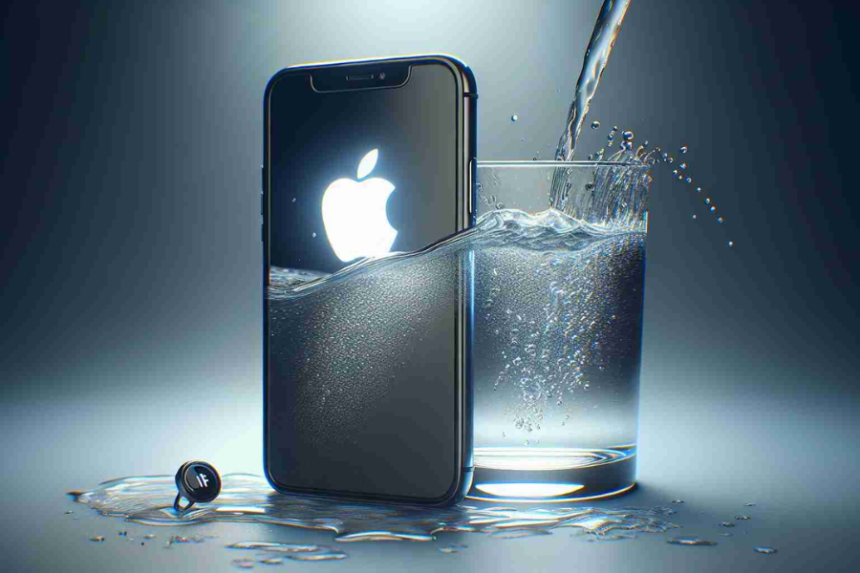The iPhone 12, released by Apple, is packed with advanced features, high-end performance, and sleek design. However, one important question that often comes up is: Is iPhone 12 waterproof? While Apple markets the iPhone 12 as being water-resistant, it’s crucial to understand what this means and how it affects your phone’s durability.
In this detailed blog post, we will explore the iPhone 12’s IP68 rating, how its water resistance works, its protection against various environmental elements, and some important tips to care for your iPhone 12. By the end of this post, you’ll know exactly what to expect when it comes to using your iPhone 12 in wet conditions.
Understanding the iPhone 12’s IP68 Rating
The iPhone 12 comes with an IP68 rating, which is an important aspect of its overall durability. But what does this rating really mean?
The IP stands for Ingress Protection, which refers to how well a device is protected from the intrusion of dust, dirt, and water. The number following IP indicates the level of protection against each of these elements.
For the iPhone 12:
- The 6 represents the highest level of protection against dust, meaning the phone is completely dust-tight.
- The 8 indicates the phone’s ability to withstand water immersion at depths up to 6 meters (approximately 19.6 feet) for up to 30 minutes.
This means that while the iPhone 12 is not entirely waterproof, it is highly resistant to water. This makes it ideal for handling spills, splashes, and accidental drops in water.
How Does the iPhone 12 Handle Water Resistance?
While the iPhone 12 can survive in water for up to 30 minutes at a depth of 6 meters, it’s important to note that this doesn’t mean it is invincible against water exposure. The phone’s water resistance is designed to protect it from everyday incidents like light rain, splashes, or an accidental dunk in a pool. However, this doesn’t guarantee that your iPhone 12 will remain unharmed in all water-related scenarios.
iPhone 12 and Different Types of Water
- Freshwater: The iPhone 12 can handle freshwater (such as a pool or rain) without issue, as long as the exposure is brief and the phone is dried afterward.
- Saltwater: Saltwater, however, can be damaging. Salt can corrode the internal components of your phone over time, so it’s advisable to avoid bringing the iPhone 12 into the ocean.
- Chlorinated Water: Similar to saltwater, chlorinated water (often found in swimming pools) can be harmful to your iPhone 12’s seals and internal components.
Limitations of iPhone 12’s Water Resistance
Even with its impressive IP68 rating, it’s important to understand the limitations:
- Prolonged exposure to water can cause damage over time. If your iPhone 12 stays underwater for extended periods beyond the 30-minute limit, its water resistance may degrade.
- Accidental drops into water can still result in water entering the device, especially if the phone’s seals have been damaged or compromised.
- Pressure at depths greater than 6 meters (such as deep dives) could exceed the phone’s water resistance capabilities.
It’s worth noting that Apple does not cover water damage under its warranty, so while the iPhone 12 is resistant to water, you should still be cautious when using it around water.
Is the iPhone 12 Fully Waterproof?
No, the iPhone 12 is not waterproof. While the phone is built to handle splashes, rain, and short immersions in water, it is not designed for long-term underwater use. Apple has made it clear that any water damage caused by prolonged exposure or submersion beyond the phone’s IP68 rating will not be covered under warranty.
The term waterproof is often misleading because no phone can be entirely waterproof. Even phones that are advertised as waterproof may still suffer damage when subjected to extreme conditions or prolonged exposure. The iPhone 12, however, provides excellent water resistance for most users in everyday situations.
iPhone 12 Durability: More Than Just Water Resistance
While the water resistance of the iPhone 12 is one of its key features, it’s not the only thing that makes the device durable. Apple has designed the iPhone 12 to withstand a variety of environmental challenges, from accidental drops to extreme temperatures.
Ceramic Shield Glass
The iPhone 12 comes equipped with Ceramic Shield front glass, which is tougher than regular glass. According to Apple, this glass is four times more resistant to drops, making the iPhone 12 less likely to suffer damage when dropped on hard surfaces like concrete.
Aerospace-Grade Aluminum Frame
The iPhone 12 also features an aerospace-grade aluminum frame that enhances the phone’s overall durability. This design helps the phone resist scratches and dings, providing additional protection from everyday wear and tear.
Water-Resistant Seals
In addition to the IP68 rating, the iPhone 12 is built with water-resistant seals around its buttons and ports. These seals play a crucial role in preventing water from entering the phone’s internal components, contributing to its overall durability.
iPhone 12 Protection Tips
Even though the iPhone 12 is built with durability in mind, it’s always a good idea to take extra precautions to protect your phone from water damage. Here are some tips to ensure your iPhone 12 stays in top condition:
- Avoid Submersion: While the iPhone 12 can handle short periods of submersion, it’s best to avoid dropping it into deep water or keeping it underwater for long.
- Dry Your Phone Immediately: If your phone gets wet, dry it off as soon as possible. Use a soft, lint-free cloth to gently wipe away any moisture.
- Use a Waterproof Case: For extra protection, consider using a waterproof phone case when you’re going to be around water for extended periods.
- Regularly Check the Seals: The water-resistant seals can degrade over time. Be sure to check for any visible wear or damage, especially around the charging port and buttons.
Stay updated with the latest Apple news and tips—only at 9to5Mac!


